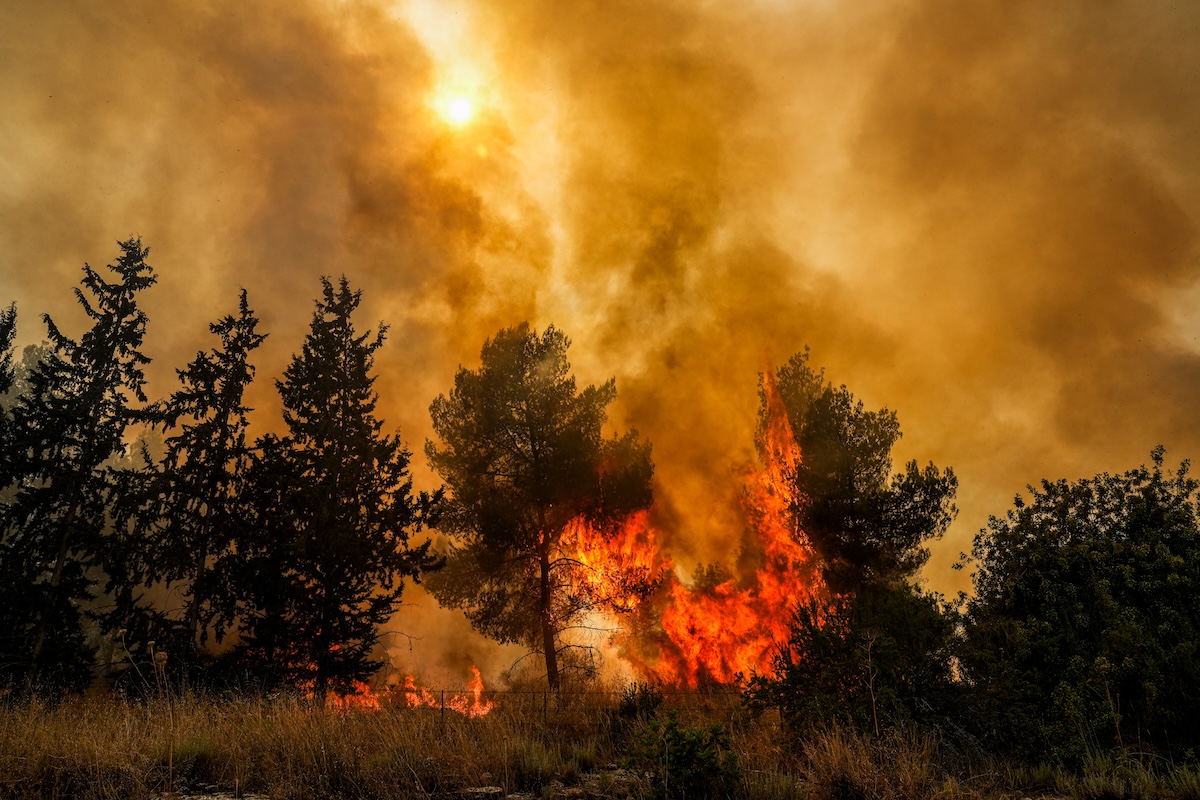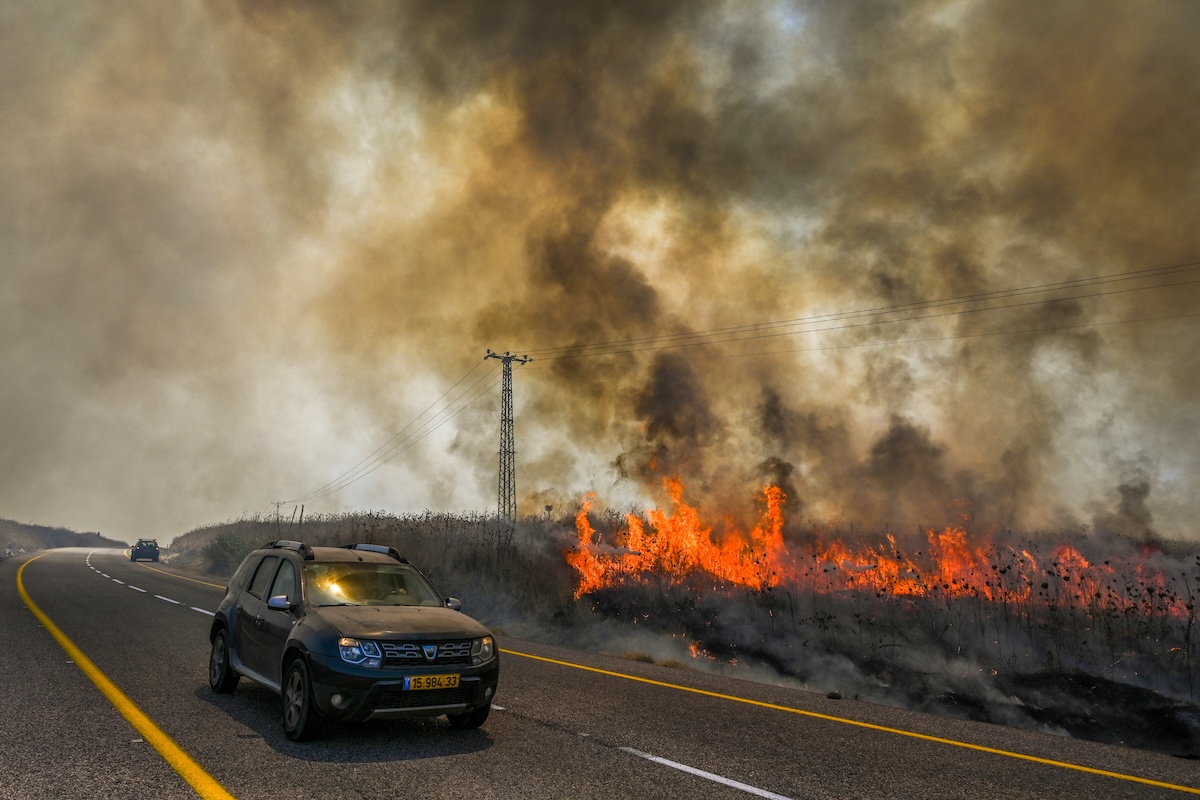Israeli firefighters and civilians try to extinguish a fire which broke out from missiles and drones fired from Lebanon, at the Ein Kshatot National Heritage Site in Moshav Natur, Moshav Aniam, Golan Heights, July 4, 2024. (Photo: Michael Giladi/ Flash90)
Israel’s northern communities have been devastated by the cross-border fire exchange between the Hezbollah terrorist organization and Israel Defense Forces over the past nine months.
However, it is not only the homes and communities which have been affected by the fighting. The forests in Israel’s northern region have experienced catastrophic consequences from the near daily tit-for-tat rocket, mortar and drone exchanges.
Shali Ben-Yishai, director of the Northern Region at the Keren Kayemeth LeIsrael-Jewish National Fund (KKL-JNF), recently conducted a press tour to demonstrate the extent of the ecological disaster in the north.
During the tour, Ben-Yishai shared that over 30,000 acres of land, including agricultural fields and forests, have been burned due to Hezbollah attacks following the Oct. 7 war, making it the largest destruction of nature since the founding of Israel in 1948.
Between 5,000-6,000 acres of forests, some of it reforested through the work of JNF, have been destroyed by fires.
“This is the biggest natural disaster since the establishment of the State of Israel and something which will take years to repair,” Ben-Yishai said.

Smoke and fire after missiles and drones fired from Lebanon hit open areas in near the Israeli border with Lebanon, July 4, 2024. (Photo: Ayal Margolin/Flash90)
He said that during the Second Lebanon War in 2006, only about 2,000 acres have burned.
Ben-Yishai also noted than many acres of forest on the Lebanon side of the border have also been destroyed, although Israel has no way to determine exactly how many.
While many of the rockets fired by Hezbollah have been intercepted by Israel’s Iron Dome air defense system, even falling debris from successful interceptions poses a fire risk, especially during Israel’s dry, hot summer months.
Forestry officials said that during the wetter winter and spring months, the fire risk was lower. However, with the dry season, which usually starts after Passover, every projectile which lands from direct impact or interception, presents a fire risk.
Eli Hafuta, KKL-JNF Upper Galilee and Golan regional director, said, “From May, every missile attack is 100% a mine of fire.”
Hafuta said the group is on constant standby due to the war situation and the hot, dry weather.

Smoke and fire caused from rockets and drones fired from Lebanon, in the northern Israeli town of Katzrin, July 4, 2024. (Photo: Michael Giladi/Flash90)
Previously, Israel’s worst fire disaster was the Carmel Mountain fire in 2010, in which between 7,000-8,600 acres of forest were destroyed.
Fire authorities estimate that the total number of burned acres of forest in this conflict exceeds that of the Carmel fire if the burned forests of Lebanon are taken into account.
Rami Zaritsky, who is in charge of KKL-JNF fire prevention, said the organization uses a complex system of observation devices that is used to monitor the outbreak and development of fires.
The system includes the use of aircraft, small drones, a heavy drone (“Nishmat”) which includes thermal vision and prolonged flight capability, and a lighter drone (“Dror”) for rapid surveillance.
The KKL-JNF firefighting team works in cooperation with the Israeli National Fire and Rescue Authority to fight the fires.
On Tuesday morning, Israel Hayom reported that the Israel Air Force is currently developing infrastructure at the Nevatim Air Base to enable their C-130 Hercules transport planes to be quickly refitted for carrying flame retardant for use in combating the large-scale.
The large C-130 aircraft is able to carry much more retardant than the smaller Air Tractor AT-802 planes currently used to fight fires. Also, the instrumentation of the C-130 allows them to conduct such operations even at night, while the Air Tractors are dependent on visual navigation of terrain.

































